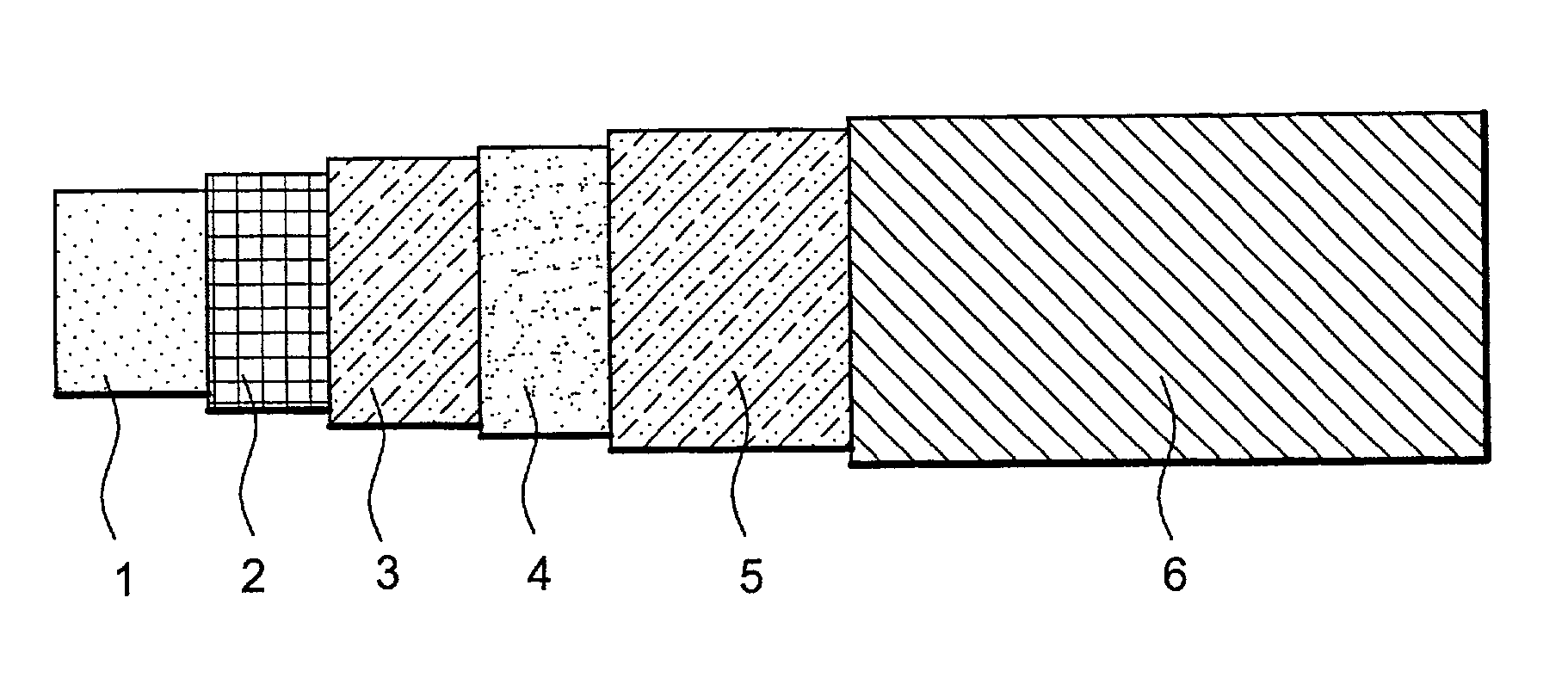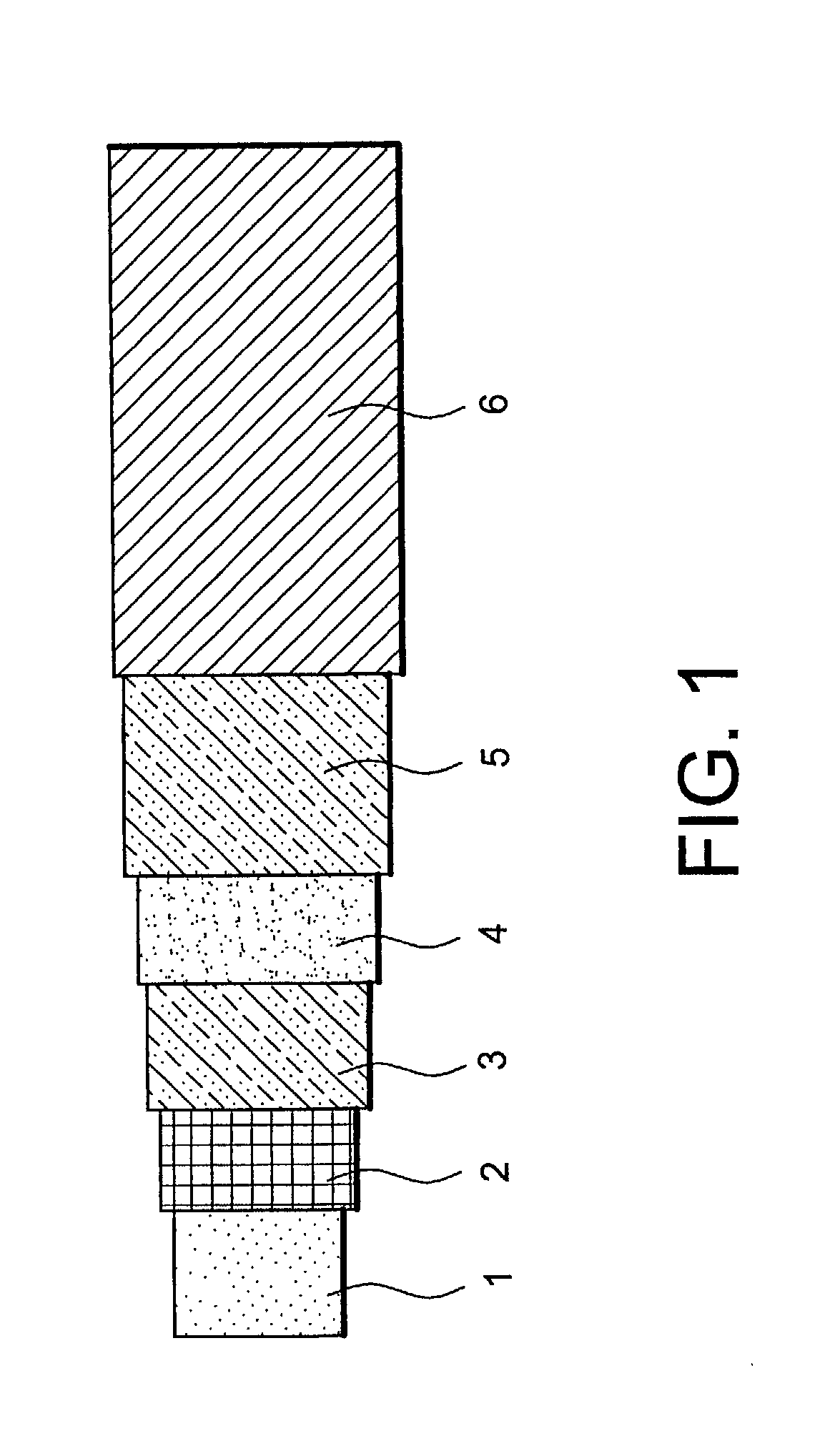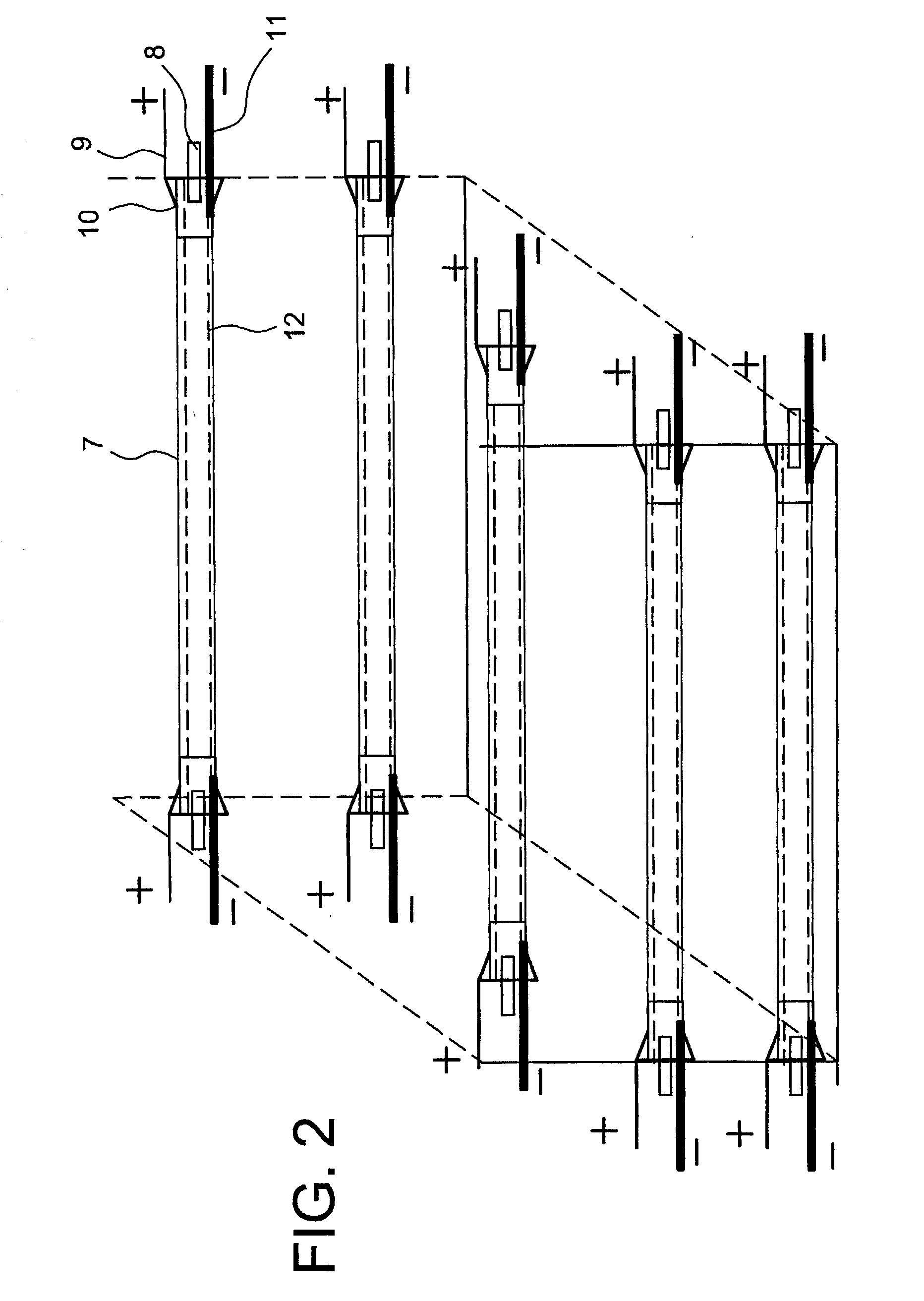Process for making a fuel cell with cylindrical geometry
a fuel cell and cylindrical technology, applied in the direction of fuel cells, coatings, cells, etc., can solve the problems of low catalyst dispersion, difficult assembly of micro-electrodes with thin ionic conducting films, and limited performance of this type of devices
- Summary
- Abstract
- Description
- Claims
- Application Information
AI Technical Summary
Benefits of technology
Problems solved by technology
Method used
Image
Examples
Embodiment Construction
[0019] The purpose of this invention is to overcome the above disadvantages by proposing a process for the preparation of an electrode-membrane-electrode assembly, to be used in the composition of a low or medium power membrane fuel cell in order to obtain a high electrode surface area in a small volume.
[0020] Another purpose of this invention is to propose a process capable of obtaining an electrode-membrane-electrode assembly with good electrical contacts, thus overcoming the disadvantages of prior art for a cylindrical type architecture and to obtain a reagents distribution area at the end of the said process.
[0021] Finally, another purpose of the invention is to supply compact electrode-membrane-electrode assemblies to be used in the composition of fuel cells in order to supply power to portable electronic equipment.
[0022] In order to achieve this, the purpose of the invention is a process for making an electrode-membrane-electrode assembly on a cylindrical substrate, characteri...
PUM
| Property | Measurement | Unit |
|---|---|---|
| porosity | aaaaa | aaaaa |
| porosity | aaaaa | aaaaa |
| porosity | aaaaa | aaaaa |
Abstract
Description
Claims
Application Information
 Login to View More
Login to View More - R&D
- Intellectual Property
- Life Sciences
- Materials
- Tech Scout
- Unparalleled Data Quality
- Higher Quality Content
- 60% Fewer Hallucinations
Browse by: Latest US Patents, China's latest patents, Technical Efficacy Thesaurus, Application Domain, Technology Topic, Popular Technical Reports.
© 2025 PatSnap. All rights reserved.Legal|Privacy policy|Modern Slavery Act Transparency Statement|Sitemap|About US| Contact US: help@patsnap.com



